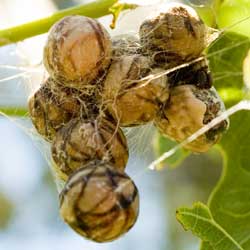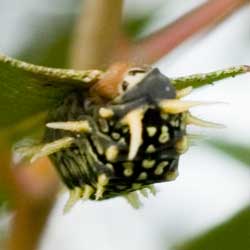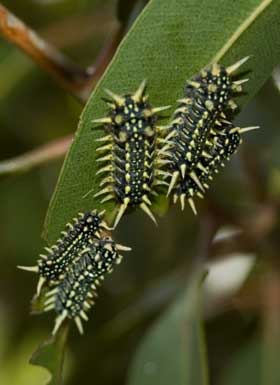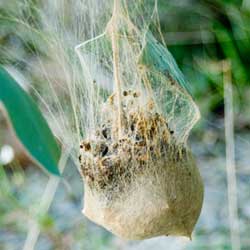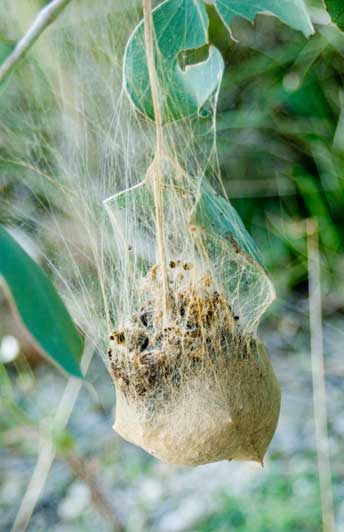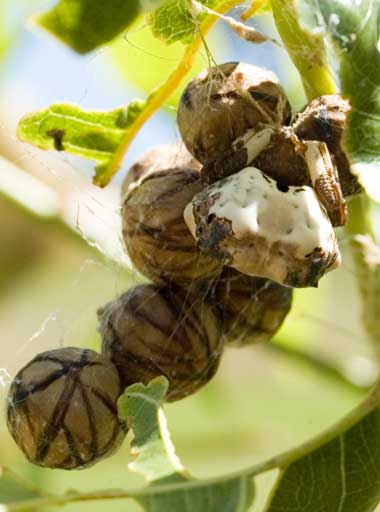
If you have lived in Australia for any length of time, especially south eastern country Australia, you would have most likely come across the egg sacks of the Bird Dropping Spider. The egg sacks are about the size of small marbles, and very strikingly marked.
We were fortunate enough to discover this nest on one of our Illawara Flame Trees (Brachychiton Acerifolium). Clinging close to the top of the egg cluster is the spider herself. With legs kept close to her body, and rather striking brown and white mottled and textured colouration, she does resemble a bird dropping after which she is named.
More information on this unusual spider can be found on Museum Victoria’s website, and the Australian Museum’s website.
